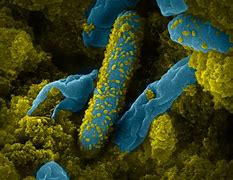Anaerobic bacteria are a group of microorganisms that thrive in environments with little or no oxygen. Unlike aerobic bacteria, which require oxygen for growth, anaerobic bacteria have adapted to survive and function in oxygen-deprived conditions. This article explores the characteristics, classification, ecological roles, and medical significance of anaerobic bacteria.
Characteristics of Anaerobic Bacteria
- Oxygen Sensitivity: Anaerobic bacteria are highly sensitive to oxygen and can be damaged or killed by exposure to atmospheric levels of oxygen. They lack or have limited mechanisms to neutralize the toxic effects of oxygen on their cellular structures and metabolic processes.
- Energy Production: Anaerobic bacteria obtain energy through anaerobic respiration or fermentation processes. These metabolic pathways allow them to generate energy without using oxygen as the final electron acceptor.
- Growth Requirements: Anaerobic bacteria thrive in environments with low or no oxygen levels, such as the human gastrointestinal tract, deep soil layers, and certain body sites like oral cavities and abscesses.
Classification of Anaerobic Bacteria
Anaerobic bacteria are classified into several groups based on their characteristics and metabolic pathways. Some common groups include:
- Obligate Anaerobes: These bacteria cannot survive in the presence of oxygen and can only grow under anaerobic conditions. Examples include Clostridium spp., Bacteroides spp., and Prevotella spp.
- Facultative Anaerobes: Facultative anaerobes can survive and grow in the presence or absence of oxygen. They have the ability to switch between aerobic and anaerobic metabolism based on the available environmental conditions. Examples include Escherichia coli, Staphylococcus aureus, and Streptococcus species.
- Aerotolerant Anaerobes: Aerotolerant anaerobes can tolerate the presence of oxygen but do not utilize it for growth. They rely primarily on fermentation processes for energy production. Examples include Lactobacillus spp. and some species of Streptococcus.
Ecological Roles
Anaerobic bacteria play important ecological roles in various environments:
- Soil and Decomposition: Anaerobic bacteria contribute to the decomposition of organic matter in soil, breaking down complex compounds and recycling nutrients.
- Intestinal Microbiota: Anaerobic bacteria are an essential part of the human gastrointestinal tract microbiota. They aid in digestion, fermentation of dietary fibers, and the production of vitamins and other metabolites.
- Environmental Processes: Anaerobic bacteria are involved in environmental processes such as bioremediation, where they help break down pollutants and organic contaminants.
Medical Significance
Anaerobic bacteria have medical significance and can cause various infections, particularly in areas of the body with low oxygen levels or in the presence of compromised host defenses. Some notable infections associated with anaerobic bacteria include:
- Oral Infections: Anaerobic bacteria play a significant role in dental infections, gum diseases, and abscesses in the oral cavity.
- Deep Tissue Infections: Anaerobic bacteria can cause deep tissue infections, such as those found in intra-abdominal abscesses or deep-seated wound infections.
- Intrauterine Infections: Infections of the female reproductive system, such as pelvic inflammatory disease or postpartum infections, can involve anaerobic bacteria.
Treatment and Diagnosis
Diagnosis and treatment of anaerobic bacterial infections require specific techniques and considerations:
- Diagnosis: Special laboratory techniques, such as anaerobic culturing and molecular methods, are used to isolate and identify anaerobic bacteria from clinical specimens.
- Treatment: Anaerobic bacterial infections aretypically treated with antibiotics effective against anaerobic bacteria, such as metronidazole, clindamycin, or beta-lactam/beta-lactamase inhibitor combinations. Surgical intervention may be necessary in severe cases to remove infected tissue or drain abscesses.
Conclusion
Anaerobic bacteria are a unique group of microorganisms that thrive in oxygen-deprived environments. They play important ecological roles and can cause various infections in humans. Understanding the characteristics, classification, and medical significance of anaerobic bacteria is essential for diagnosing and treating associated infections. Continued research and improved diagnostic techniques will further our understanding of these fascinating microorganisms and their interactions with the environment and human health.

